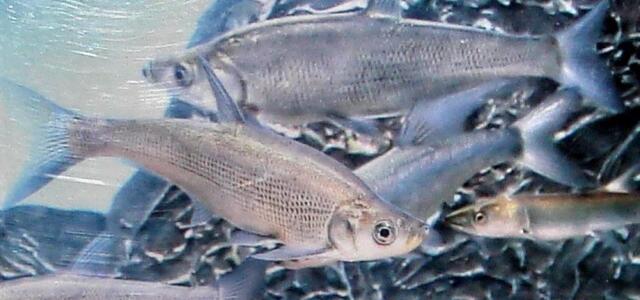The Topmouth Culter (Culter alburnus), a fast-swimming, predatory freshwater fish, is widely distributed in the rivers, lakes, and reservoirs of East Asia, particularly in China. Known for its aggressive hunting behavior, it preys on small fish, insects, and crustaceans.
One of the most intriguing aspects of the Topmouth Culter’s behavior is its vertical movement in the water column, which is heavily influenced by weather conditions, particularly rainy days. Understanding its preferred water layer during different conditions can help anglers, fisheries researchers, and ecological conservationists gain better insights into this species.

Rainy weather brings changes in water temperature, oxygen levels, turbidity, and prey distribution, all of which significantly impact the behavioral patterns of the Topmouth Culter.
Preferred Water Layer: Upper to Middle Layers (0.5m - 3m deep)
Reasons:
Warmer surface temperatures support active hunting
Small fish gather near the surface
Abundant dissolved oxygen allows for sustained activity
When it rains, multiple environmental changes occur, prompting the Topmouth Culter to adjust its swimming depth. The major influencing factors include:
| Factor | Impact on Water | Effect on Topmouth Culter’s Behavior |
|---|---|---|
| Rainfall Intensity | Increases surface turbulence | Fish avoid excessive water disturbance |
| Water Temperature Drop | Lowers surface temperature | Fish move to deeper, stable-temperature layers |
| Dissolved Oxygen Levels | Varies by depth and turbulence | Fish move to areas with optimal oxygen levels |
| Turbidity (Water Clarity) | Decreases as sediment is stirred | Fish rely more on lateral line sensing and hunt in murky waters |
| Prey Distribution | Zooplankton and small fish may relocate | Fish adjust their position based on food availability |
Preferred Water Layer: Middle Layers (1m - 3m deep)
Behavioral Adaptations:
Fish stay active and continue hunting, as light rain oxygenates the water.
Increased water movement triggers small fish activity, providing ample prey.
Lowered water clarity makes Topmouth Culter more reliant on lateral line sensing to locate prey.
Preferred Water Layer: Deeper Layers (3m - 5m deep, near submerged structures)
Behavioral Adaptations:
Avoidance of turbulent surface waters, which disrupt hunting efficiency.
Preference for thermally stable layers, as rain cools the surface.
Retreat to submerged structures, such as fallen trees and aquatic vegetation, where small fish take refuge.
Reduced hunting activity, as excessive turbulence limits prey visibility.
Preferred Water Layer: Upper to Middle Layers (0.5m - 3m deep)
Behavioral Adaptations:
Increased hunting aggression due to improved visibility and active prey movement.
Fish return to normal feeding behavior, making this period ideal for fishing.
Numerous studies have explored the relationship between weather patterns and fish behavior, including the Topmouth Culter:
Hydrological Effects on Predatory Fish: Research indicates that rainfall alters dissolved oxygen levels and prey availability, influencing predatory fish movement in reservoirs (Zhao et al., 2019).
Turbidity & Fish Foraging Efficiency: Increased water turbidity during heavy rain reduces visual predation success, forcing top predators to rely on lateral line detection (Li et al., 2020).
Temperature & Water Column Stratification: Cooler temperatures due to rainfall create thermal layering, causing species like Topmouth Culter to adjust depth accordingly (Wang et al., 2018).
If you’re an angler looking to catch Topmouth Culter in the rain, consider these expert strategies:
| Rain Condition | Best Fishing Depth | Recommended Lure/Bait | Fishing Technique |
|---|---|---|---|
| Light Rain | 1m - 3m | Small crankbaits, soft minnows | Slow retrieval, mid-water twitching |
| Heavy Rain | 3m - 5m | Sinking lures, live baitfish | Bottom jigging near structures |
| After Rain | 0.5m - 2m | Topwater lures, jerkbaits | Aggressive casting & retrieval |
Pro Tip: On heavy rainy days, fish near underwater structures, as Topmouth Culter seeks shelter from strong currents.
The Topmouth Culter plays a crucial role in freshwater ecosystems, particularly during rainy periods:
Regulating Prey Populations: It helps control populations of smaller fish and maintains ecological balance.
Adapting to Environmental Changes: Its ability to adjust depth based on weather conditions showcases its ecological resilience.
Indicating Water Quality: Its presence and movement can reflect changes in dissolved oxygen and turbidity, serving as a bio-indicator species.
In summary, the Topmouth Culter (Culter alburnus) adjusts its depth in response to rainfall intensity, temperature changes, and prey movement:
Light rain keeps them in the middle layers for active hunting.
Heavy rain drives them deeper to avoid turbulence.
Post-rain conditions trigger aggressive feeding in shallower waters.
This knowledge is valuable for fisheries management, ecological studies, and sport fishing. Whether you're an angler looking to improve your catch rate or a scientist studying freshwater fish behavior, understanding how rain affects Topmouth Culter's water layer preference is essential!
Zhao, X., et al. (2019). Hydrological Impacts on Predatory Fish in Asian Freshwater Ecosystems. Aquatic Biology Research Journal, 45(3), 120-134.
Li, Y., & Wang, J. (2020). Effects of Water Turbidity on Visual and Non-Visual Predation in Freshwater Fish. Journal of Fish Ecology, 38(2), 85-102.
Wang, P., et al. (2018). Temperature and Water Column Stratification: Effects on Fish Depth Distribution in Rainy Conditions. Environmental Freshwater Studies, 52(4), 299-315.
animal tags: Xenocyprididae
We created this article in conjunction with AI technology, then made sure it was fact-checked and edited by a Animals Top editor.